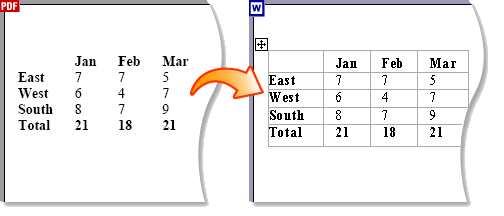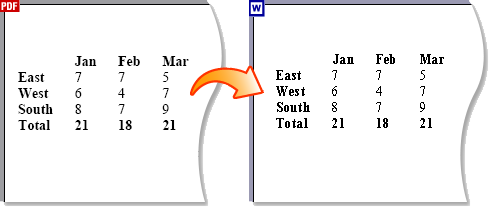Table Detection
Many users need to extract table data from PDFs. Solid Framework gives you control over this option.
When Solid Framework starts converting the document, it creates a model of the contents of the PDF, allowing it to identify areas of text that "appear" to be a table. The rules for identifying tables are complex, and include similar data types, amount of white space etc. The user can specify how such data is handled in the reconstructed document.
Detect Tables
In this mode if a table is detected then it will be recreated as a table in the reconstructed document, allowing it to be used in the same way as any other tabular data. For example, cell backgrounds and borders can be specified.
This is usually the best option if the PDF was originally a text document such as a report.
This option is only available if the reconstruction mode is "Flowing" or "Continuous".

Do Not Detect Tables
In this mode if tabular data is present in the PDF, then it will be reconstructed just as text, not as a table, with white-space inserted to help the text to line up correctly.
This is usually the best option if the document is a brochure.
